What The Heck Is Xenobiology?
The Naked Scientists meet the biologists who are inventing a new form of genetic information: this strange science is called xenobiology. Plus, in the news, a breakthrough in the treatment of cancer, the video game that tackles fake news and scientists make progress with Parkinson's.
In this episode
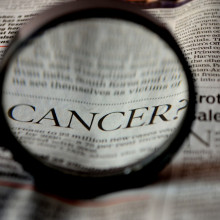
00:51 - Breakthrough tests on "mini cancers"
Breakthrough tests on "mini cancers"
with Nicola Valeri, The Royal Marsden
Scientists in London have discovered how to grow miniature copies of a patient’s cancer - these are called organoids - in a laboratory dish. These “mini-cancers” can then be used to screen over 50 different cancer drugs to find very quickly the combinations of treatments that will - or won’t - work for that person. Chris Smith spoke to study author Nicola Valeri from the Royal Marsden…
Nicola - the key issue here of when we face new drugs and new trials for patients is that we need to enrol a number of patients in clinical trials and then, many years later, we find out if the drug works or not. One the key issues we face in personalised medicine is to find the right drug for the patient in order to avoid toxicities to other patients that are unlikely to benefit from it.
Chris - Is it not also true that everyone is an individual and, therefore, just because a drug works in a population of patients, if you look at the individual, it may not works for them?
Nicola - That’s exactly the problem. That’s exactly what we face in the clinic even though you have positive data from clinical trials, sometimes the drug works, some other times it doesn’t and that’s what we’re trying to address.
Chris - Because, at the moment, say someone is enrolled into a course of treatment with an anticancer drug, we only find out months later in that person whether that drug’s doing them any good. So how can you improve on that?
Nicola - We need to develop tools that would enable us to define a kind of prediction whether the patient is going to benefit or not from this specific treatment. At the moment, in clinic, we have very to address this need. The real issue is that cancer is a very heterogeneous process; cancer changes over treatment so basically we need to have better models that we can manipulate in the lab and can tell us more about the way a single patient will respond to the treatment.
Chris - Is that what you’re now announcing, you’ve now found a way of doing this better?
Nicola - Yes. We can now take small biopsies from patients tumours. We focussed our attention on metastasis so when the cancer has spread outside the primary organ on bowel cancer and stomach cancer because these are two deadly diseases. Taking these biopsies from these patients we try to model what would happen in the clinic, in the lab.
Chris - You make it sound simple but I’m sure it’s not. How do you, from a biopsy, work out what would happen if you were to treat that particular patient from which that biopsy was collected with a certain drugs?
Nicola - What we have done, we have taken biopsies from liver, lung, or other organs affected by metastasis and we basically grew then as a 3D structure in the lab. Then we compare how this little tumour growing in my lab performs under treatment, response to anticancer agents as compared to the response observed in the patient.
Chris - I suppose one advantage of this is you can take that biopsy and divide it to grow lots of little mini identical cancers, so you can then experiment with lots of drugs in parallel and then work out what perhaps is the optimal drug, or combination of drugs for that person?
Nicola - Absolutely. That was one of the key points of our study. We grow tumours that are so small - like 200 micrometres - so we can grow as many as we want in a few weeks. Time is also another important bottleneck when we want to provide information to patients in real time, and you are correct, we can screen a number of drugs. In our case we screen 55 drugs and so we can, in a couple of months or even less, provide an answer about the right treatment.
Chris - That will be: does this person’s cancer respond to the drug we’re giving, is there evidence of side effects, is the cancer showing signs of becoming resistant, etc?
Nicola - Unfortunately, we cannot give information about the side effects, but what we do know from this test is if the organoid - the little tumour - in the lab does not respond to the drug, in 100% of cases the patient will not respond in the clinic. On the contrary, in 90% of the cases where we see a response in the lab, we will see a response in the patient as well.
Chris - If you were to translate this paper in Science this week to the clinic, what sort of an impact would it immediately begin to make for patients?
Nicola - First of all we might be able to rule out drugs that wouldn’t work, and then we might be able to make a quite accurate prediction of what is going to work. Of course, there are a number of other factors in the patient; the microenvironment for the tissues around the tumour they also play a role in cancer, and also the metabolism of the drug. At the moment, we are still working on these factors because we cannot account for these factors in our current system.
Chris - What’s next?
Nicola - For us, the next step is to allocate patients to treatment based on what we see on our organoids. We are developing protocols so that we can collect biopsies from a patient who’s coming to the Royal Marsden, test a number of drugs prospectively, and then allocate the patient a specific trial based on the findings we observed in the lab.

06:23 - Making and Faking News
Making and Faking News
with Sander Van Der Linden & Jon Roozenbeek, University of Cambridge
Something that’s increasingly cropping up in the news now is “Fake News” - where social media accounts and websites are used to disseminate false information with the intention of deceiving people. But these fake sources are often well disguised and they can appear - at least to the uninitiated - to be quite plausible. Now researchers from Cambridge University, Sander Van Der Linden and Jon Roozenbeek, are trying to fight back by developing an online game - GetBadNews.com - that teaches people some of the tricks that the fake news fraudsters use, making them easier to spot. Izzie Clarke has been taking a look.
Izzie - Who doesn’t love video games? You go through intense challenges, defeat the baddie, and then reap the rewards. But, how about a game that’s the complete opposite to that, spreading mistrust, anger, and fear? It’s all about
NEWS HEADLINES
Fake news
Fake news
The issue of fake news.
It’s all fake news
Izzie - That’s exactly what researchers at the University of Cambridge have created. The game Bad News puts the player as the Editor in Chief of a fake news website. But the study behind all of this is to make the public more aware of the spread of disinformation. I met up with the University's Digital Video Game Society to give it a go and find out what they think about fake news…
Student 1 - I decided to personally attack the scientists... I’m Jiri Guth and I study theoretical physics here at Cambridge. It’s kind of hard to say how much I am personally affected by fake news because when you see fake news you don’t know if it’s fake or it’s real news.
Student 2 - I’m picking a name for my website to post some fake news. We have here Honest Truth online. I’m not that credible yet, but I think I have to really work on that.
Izzie - The aim is to build a Twitter empire, gain credibility, and collect a series of scheming badges to become the ultimate manipulating mastermind. Dr Sander Van der Linden, the Director of the Social Decision Making Lab in the Department of Psychology, explained how this is actually helping the player to become less susceptible to fake news…
Sander - It’s really building off of earlier research where we try to implement the idea of a vaccine against fake news. The game is really about helping people spot, remember, and rehearse these tactics so that when people are exposed to these in future, they’re hopefully more resistant to them. In very short, once you know the magic behind the trick you won’t be fooled by it again. I always tell people to imagine walking a mile in the shoes of someone who’s trying to decieve you is probably the best way to learn about how they actually work and how to immunise yourself against these sort of tactics.
Izzie - Now let’s get gaming. Jon Roozenbeek designed the game and took me through how it works…
Jon - The gamer is the bad guy, and we’ve deliberately tried to make the player a little bit uncomfortable with these things. Sometimes the game give you an option of hey, well I’m not comfortable with this thing and then the narrator basically tell you well, too bad. If you want to be a disinformation tycoon you’re going to have to skirt a few ethical guidelines here and there.
The game is basically choice based. It’s a very simple design; you start playing the game immediately, you get to choose between options - usually two. It leads you through a number of techniques that are commonly used in the production of disinformation. These techniques are, for example, impersonation; that is impersonating a news website; impersonating an important person or organisation. The misleading use of emotion. Polarisation, that means driving the political left and the political right further apart and exploiting that. Conspiracy theories make their way into the game as well. Discrediting your opponents in various ways, and trolling.
Izzie - You have to create Twitter bots that overthrow reliable sources, impersonate the likes of NATO, and trick the public, and stir up conspiracy theories to start a frenzie. But, by doing so, when you come across those tactics online, you’re more immune to them. This game is like a psychological vaccine…
Sander - What we found, essentially, is that after playing the game - this was done in a High School in the Netherlands. Students thought fake news articles that we show them after the game were less reliable than students in the control group who didn’t play the game. That signaled some early evidence that the game could be effective and we decided to scale that at a much larger level.
Izzie - Sander and his team have asked participants to also take a survey allowing them to evaluate how effective this game is to help determine questionable from real news. This can open a whole new realm to educational gaming…
Jon - What’s next? The organisation that we work with in the Netherlands, DROG, they are also developing educational programs that are much more explicitly aimed at teaching how disinformation actually works and how it spreads in a much more comprehensive way. We’re hoping to implement these in schools but also in other places where this might be useful.
We’ve requested funding to translate the game into different languages as well for countries where disinformation is a larger problem than it is here, for example Ukraine. We’re thinking that Ukraine and Ukrainian students, for example, might benefit a lot from having these programmes available.
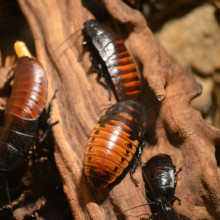
13:11 - Mythconception: Can cockroaches survive a nuclear wipeout?
Mythconception: Can cockroaches survive a nuclear wipeout?
Lewis Thomson has been working out who, or what, could survive a nuclear holocaust.
Lewis - Cockroaches: these creepy crawlies are incredibly hardy creatures able to survive what would kill most of us. You can squeeze a cockroach to a quarter of it’s normal height and it will crawl away unharmed. It’s even said that if there was a nuclear war, cockroaches would be the only thing left alive. But is that actually true?
Well, while cockroaches are able to tolerate high temperatures, nothing on Earth could survive the heat produced by a nuclear bomb exploding. The temperature within a ten metre radius of the explosion becomes hotter than the surface of the Sun. If the cockroaches were far enough away, they could survive the initial blast. But what about the nuclear fallout?
When a nuclear bomb explodes it releases ionising radiation, and this kind of radiation contains enough energy to break apart chemical bonds including those holding our DNA together. This means our cells stop working properly and can die causing vomiting, hemorrhage, seizures and, in many cases, death. So are cockroaches somehow immune to these problems?
Well, it’s true that cockroaches are able to tolerate much higher levels of radiation than we can. In a rather unpleasant experiment, the animals were subjected to high radiation levels for a month. Radiation is measured in a unit called Gray - 10 Gray would kill a human in a few days. But some of the cockroaches survived a months exposure to 100 Gray. So why are cockroaches better than humans when it comes to surviving radiation?
Well, DNA is most vulnerable to radiation damage when it’s dividing. This happens any time your body is making new cells, which in us is happening all the time. But cockroaches, like most insects, produce new cells at a much slower rate and so the proportion of cells in the body that will be vulnerable to radiation damage is much lower than in humans. But would this be enough to save them from nuclear war?
The nuclear bomb which was dropped in Hiroshima in 1945 is estimated to have emitted between 4 and 12 Gray of radiation in a one kilometre radius, so cockroaches would have been okay. But today’s nuclear weapons are estimated to be several thousand times more deadly so a global nuclear war today would almost certainly wipe out cockroaches.
However, there are some organisms on Earth that might survive. Thermococcus gammatolerans is a species of Archaea - a group similar to bacteria which lives in boiling hot hydrothermal vents on the ocean floor. It can tolerate 30,000 Gray - that’s over 3,000 times what humans can cope with. One species of fungus has been found growing inside the melted reactor of the Chernobyl nuclear power plant, finding a way to convert the radiation into energy for itself.
While cockroaches have a better chance than us at surviving nuclear war, they probably wouldn’t. The only things we’re pretty sure would survive are a few species of Archaea, bacteria and fungi. So let’s hope humanity has the sense to not hit that big red button.

16:37 - Build up of Calcium could lead to Parkinson's
Build up of Calcium could lead to Parkinson's
with Gabi Kaminski Schierle, University of Cambridge
Parkinson’s Disease is one of the commonest neurodegenerative diseases. It leads to difficulties with making movements and patients often also develop a characteristic tremor. In recent years scientists have discovered that a protein naturally present in the brain called alpha-synuclein appears to build up in some nerve cells and kill them, causing the disease; although why this happens, no one knew. Now, we do, thanks to a study by Cambridge scientist Gabi Kaminski. She’s found that the protein normally helps nerve cells to squirt out the neurotransmitter chemicals that enable neurons to communicate. As Chris Smith found out, it does this by temporarily soaking up some calcium, which makes it sticky, enabling it to link up with other alpha-synuclein proteins and squeeze out the neurotransmitter from the nerve ending. But as we age, both the protein and calcium tend to loiter for longer inside those nerve cells, making them more likely to form the toxic aggregates that go on to cause Parkinson’s.
Gabi - Parkinson’s disease is a neurodegenerative disease. That means people suffering from Parkinson’s disease will have a neuronal loss in a specific region of the brain. This has been linked to a protein called alpha-synuclein. This protein will form protein aggregates in the brain, and these protein aggregates can then kill off individual neurons and that is the problem.
Chris - So the outstanding questions then is we know this protein is linked to the disease, but we don’t know why it builds up and forms these aggregates that then poison the cells that are making it?
Gabi - Yes, that’s correct. We know it’s a relatively small protein and it’s very abundant at the so-called nerve endings; that’s where they squirt out chemicals that they use for neuron to neuron communication. You have little oily droplets that are called synaptic vesicles, and where these chemicals that do the chemical communication between neurons are packed into, it’s been known that this protein alpha-synuclein can bind to these oily little droplets and, thereby, help the release of these chemicals to then lead to neuron to neuron communication.
Chris - So that much was known, but what’s the unknown; what have you been able to discover?
Gabi - We wanted to understand how when there is a signal coming to the neuron that tells the neuron to release these chemical substances we know that there is a lot of calcium coming inside the cell. That is a very very crucial moment because the calcium concentration that is normally kept extremely low inside the cell is suddenly rising to really high concentrations. What we found was that there is a region within the alpha-synuclein protein that is highly negatively charged. That means the positive calcium ions can bind to this negatively charged protein and then can really help the clustering of these oily droplets, these vesicles, at the membrane and help the release of these chemicals.
Chris - Is it fair to say then, it’s a little bit like me squeezing an orange? Basically the calcium comes into the nerve ending, it sees this negative chunk of alpha-synuclein protein and the calcium all sticks and clusters around the negative charges because the calciums a bit positive and it’s attracted to it that what this then does is encourage the alpha-synuclein to squeeze those vesicles because it can get close to them, and that encourages the nerve chemical to come out, and that facilitates the passage of nerve information?
Gabi - Yes, exactly. This is really an important mechanism and we’ve now had the tools to study that because we have now access to what is called super resolution microscopy. We can really look at what individual alpha-synuclein molecules are doing inside a nerve cell and that is really exciting.
Chris - Indeed. We now have, thanks to you, a much clearer idea as to what this protein is doing - what its normal job is, why it’s there, but why does that then turn into the thing that we started discussing which is Parkinson’s disease? What makes it then build up into these toxic aggregates that kill cells?
Gabi - Yeah, that’s really an interesting point. The highest risk factor of developing Parkinson’s disease is age and, as we age, our metabolism is slowing down so this protein turnover is significantly slowed down. If we have too much of that protein it has a tendency to then become very sticky and if there are more proteins coming together, the chances are increased. Another problem is you might get a bit too much of the calcium coming in because the cell is too weak to get rid of all the calcium that is coming in.
Chris - Critically though, can you stop it?
Gabi - That's a very interesting question. And I think we’re getting a step closer here because this calcium binding region on the alpha-synuclein protein becomes now a really interesting region for small molecule drugs to bind to them. We think that this would prevent the aggregation. The other important finding that we have, we could show that if you treat the cells with the calcium channel inhibitors this might also be beneficial to patients. So there is hope.

22:26 - Robots: Give a dog a door...
Robots: Give a dog a door...
with Peter Cowley, Angel Investor
A team of engineers at Boston Dynamics, in the US, released a video of their robot dog, SpotMini. But this isn’t a toy: this is an intelligent robot that can open doors and isn’t phased by human interference. Izzie Clarke asked Angel Investor, Peter Cowley, what do Boston Dynamics do and how much do we know about SpotMini?
Peter - Boston Dynamics was formed about 25 years ago and was privately owned until it was bought by Google about five years ago and then sold to a Japanese VC firm. SpotMini is probably the seventh or eighth that’s been designed and built and put into the public domain, so we know about it. There may be lots going on in their labs.
What it is a four legged thing that looks a bit like a 2ft high dog. It’s got an arm on it and the arm can have various contraptions on it. It’s about 80cms high, weighs about 30 kilos. It’s fully electric; some of the earlier ones had little diesel engines onboard so it was quite noisy. It has 3D vision; it can carry about 14 kilos and it’s got 17 joints and that should be compared with the 360 odd joints in the human body, so it will run for about 90 minutes.
In this particular video that’s online in various places the first bit shows this SpotMini being attacked, unfortunately, by a human with a hockey stick that’s trying to stop it opening a door. Eventually the human pulls this thing back with some lead in the back and pulls it away from the door. Finally the human moves away and so it moves towards the door, and then it finds the handle and then rotates the handle. Then it puts a foot round and opens the door which is obviously quite strongly spring loaded, so it’s pretty impressive.
Izzie - Yes. So even with all this interference it keeps going and it opens this door. I’ve seen the video and this robot dog is pretty robust. How does it work and how is it able to stay so focussed on this task?
Peter - There’s speculation online and it’s not clear from the video and they've obviously being quite coy about it because it’s commercially secret. There may well be, and probably is, somebody off camera that’s controlling its movements backwards and forwards. However, the actual opening of the door is probably not possible to do by the human, so it’s probably either been taught or, rather spookily, has learned to open the door. Particularly impressive is that it balances - moves around.
Izzie - Because that must be something quite difficult to do, this idea of balance in general, but why make these types of robots in the first place?
Peter - Robots have come a long way since the word was invented in the early 20s. It’s a Czech word robota apparently, but they became in low mass production in the 60s. I was involved in robots in the 80s but these were stationary. The things you see on the television where they’re doing something on a car production line where they’re painting or tightening a bolt or putting a windscreen in.
Move on forward to the ones that are non-stationary. In fact, autonomous vehicles are robots. They’re on a road and it’s quite easy to move around. What Boston Dynamics has done is produce what look like animals and humans which can cope with unusual terrains and that is really different. There’s a great video of a two legged one walking through a slippery snowy forest, slipping around the place and picking itself up. The reason behind this to understand what it’s like to cope with non-standard surfaces really and then, of course, also indoors.
Izzie - So these can cover a lot of different terrains but what is the future of these robots?
Peter - That’s interesting. hat’s an interesting question because the speciality of these robots, assuming one takes it beyond just being a science experiment and actually gets into volume, manufacturers, is for situations where one needs the device, as we said, to cover terrains which are non-flat - indoors or on roads, etc. Therefore it’s in a situation where, probably, a human being is with the robot or the robot is replacing the human being. Clearly, in that situation, military comes up doesn’t it? And there are some pretty worrying numbers out there on the internet that a good proportion of, say, the American armed forces will be robots in time. There's all kinds of science fiction connotations there etc.
There will be occasions where, say one is decommissioning a nuclear plant or something where a robot of this form that’s having to walk through some sort of environment which is radioactive or difficult, you could use it in that situation. There’ll definitely be occasions where robots need to cover ground which is not easy to do just with wheels. So yeah, the applications will be huge but, at the moment, I’m not quite sure what they are.
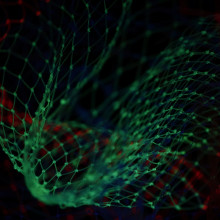
Genetic Modification: All things considered.
with Brenda Parker, University College London
The story of xenobiology starts in the 70s and 80s, with the emergence of a technology we all know very well today. Genetic modification. DNA is the code inside all living things. It’s like an instruction manual, that makes you you. And because it is written in a universal biological language, if you take an instruction from one thing and put it in another, you can sometimes – if you’ve done it right - give one organism a trait of another. When it comes to applications, the sky is the limit. From the frivolous – cats with genes from jelly fish that glow in the dark, to the potentially famine ending – rice that can survive droughts, genetic engineering could solve some pretty dramatic problems, as Georgia Mills found out from Dr Brenda Parker at University College London.
Brenda - A genetically modified organism is, perhaps, one that contains DNA that didn't belong in the organism to begin with. It might have been taken from something else or, perhaps, a set of genes from different organisms have been put together to create a pathway to manufacture a specific product.
Georgia - Dr Brenda Parker is a lecturer in the Department of Biochemical Engineering at University College London...
Brenda - For example, there’s a lovely paper about making bioplastics in microalgae. They took the genes from another organism that happens to make this bioplastic and they inserted that into the microalgae so it started to make the bioplastic inside the cells, so that would be an example of a genetically modified organism.
Georgia - DNA is the code inside all living things. It’s like an instruction manual that make you you, and me me. Because it’s written in this universal biological language, if I take an instruction from one thing and fit it inside another you can sometimes, if you’ve done it right, give one organism a trait from another.
When it comes to applications the sky’s the limit. From the frivolous - you can give a cat genes from a jellyfish to make it glow in the dark to the potentially famine ending - could you tweak the genes of rice so it could survive droughts. Genetic engineering could solve some pretty traumatic problems, which is why scientists like Brenda are so interested in it…
Brenda - My background is primarily on microalgae; that’s what I work on at the moment. GMOs is something that’s been emerging for us in the last few years as more and more technologies come on line for genetic manipulation of microalgae. Specifically, I’ve been working on vaccines and novel antimicrobials, so engineering algae to be able to produce these products. I think, long term, one of the goals has always been for this industry to try and harness the power of photosynthetic organisms to make commodity products, so that would be something like biofuels. Yields at present are very low; it’s not economically viable so a lot of attention and a lot of effort has been put into strategies to try and boost productivity or increase yields, and some of these will fall certainly fall into the category of genetically modified organisms.
Georgia - Algae that can grow vaccines, drugs, produce high yields of renewable fuel. If we can crack it, it sounds almost too good to be true. But genetic modification is not exactly the most popular kid in the technological playground. A recent survey found that 64% of Americans were opposed to GM foods, and YouGov reported that four out of ten of us in the UK felt negatively about them.
Among the concerns that have been raised is this idea of contamination. A genetically modified crop could escape, interbreed or crosspolenate with the natural populations. There’s even a funky trick some organisms can do where they nick DNA from something else and use it themselves. This is called horizontal gene transfer. In this scenario, once the horse has bolted there’s not much you can do. But finding out how likely this scenario is, or even if it would be a problem in the first place is a little tricky...
Brenda - The issue really is about the uncertainty about cultivating these organisms at scale. The impact they might have if they were to get out into the environment and really trying to ascertain if there’s a risk to ecosystems perhaps, and really trying to nail down what might the impact be on the surrounding environment because it’s really not certain at the moment.
Georgia - How do you do that; how do you work out what the risk is and what might happen?
Brenda - That’s a really interesting question. There has been a really lovely piece of research published just last month from a group in San Diego where they had cultivated algae where one of the strains had been augmented with GFP which is a fluorescent protein, and another had been modified to increase it’s fatty acid profile so as if we’d were growing it for biofuels.
What they did is they set up different nutrient traps around the site of cultivation and they measured how much of GM algae they could detect, so these traps were full of the nutrients that algae enjoy growing on. And really, what they found at the end of the experiment was while they could detect the GMOs in certain places, depending on the prevailing wind, the actual natural population vastly exceeded the GMOs. So while they were present they certainly didn’t excel or didn’t outcompete what was already in the natural environment.
Georgia - Are these studies quite hard to do in general?
Brenda - Incredibly difficult to do. This study had been granted permission from the EPA, the Environmental Protection Agency in the US. This is really the first of its kind as far as I know. In Europe, this would be an incredibly difficult study to do just because getting a license for uncontained release of GMOs would be very hard.
Georgia - The idea is that people are worried about the risks so, therefore, it’s almost impossible to do an experiment that would look at what the risks actually are?
Brenda - Yes. It is a little bit of a catch 22. It’s something that we have on another European project that I worked on recently, The Analgae Project that we did look at what might be the restrictions in terms of conducting these kinds of trials. I think Europe is very unified in terms of its approach to uncontained release of GMOs. However, I suppose, as with all of these things it may well be another country that decides to lead on this first. And certainly the study that’s been done in the US has been quite pioneering in the way that its approached it and perhaps that will build confidence to let other people try but, in the meantime yes, it’s incredibly prohibitive. We have to literally culture these organisms in the way that we would culture any other genetically modified organism.
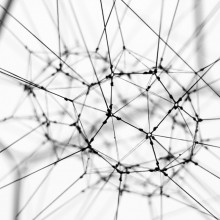
34:40 - What is Xenobiology?
What is Xenobiology?
with Markus Schmidt, Biofaction
Editing biology opens up worlds of opportunity, but there’s the chance it will be absorbed into the natural world - and this very concern makes it hard to run tests to establish how likely this is. But what if you had a system that used the rules of biology, but was completely separate to it? This is where Xenobiology might have something different to add, as Dr. Markus Schmidt, the founder of the company Biofaction in Vienna, explained to Georgia Mills.
Markus - Xenobiology is a combination of two words: biology and Xeno and xeno comes from the Greek language and means foreigner or stranger. It means that this is a form of biology that is strange or unknown to the biology that we know so it’s a kind of biology that is going to be invented in the laboratories.
Georgia - Dr Markus Schmidt is the founder of the company Biofaction in Vienna.
Markus - One of the applications that I’m interested in is increasing or improving biocontainment. If you take an example from the computer world, you have Microsoft or Apple or Linux operating systems and there are viruses around or ransomware or whatever, malicious software that can affect your computer and you have to constantly have to update your computer. If you write a virus, for example, for Microsoft system it’s supposedly not going to affect a Macintosh or Linux system. They are seperated because they are made up in a different way.
If you look at biology and living systems, practically all of them have the same operating system in the way that they use the same chemistry and they use the same genetic code. That means that viruses from the natural world can also easily evolve and effect all kinds of different systems. But if I have a different operating system, then you would be spared from this kind of threat or evolution and xenobiology can, in principle, come up with a solution to isolate these new genetic models from the living world so that they would not do any harm to the environment. This is one of the major applications that seem to be of interest to any kind of other application that could come out of it.
Georgia - Okay. So there’s this idea that because they’re such different codes in xenobiology that it wouldn’t be able to integrate with all of our natural living things today and it wouldn’t have this chance to be either eaten by something or transfer the information across which could have runaway unintended consequences?
Markus - Yes, exactly. You can see that our current living systems, they’re quite similar on a chemical basis. Plants look very different from an animal or bacteria but, on a chemical level, they’re quite similar. If you were able to make a different chemical system that is not too different from biology, except that it cannot interact or has a different language, you can make a different island and isolate these new forms of life from the existing forms of life. That means they would not be able to interact or exchange genetic information. They could interact on the level of using resources that’s true, but not on an information level. This is what’s called a genetic firewall that there’s no giving and receiving of information between these two islands, and making such an island is one of the goals when it comes to biocontainment.
Georgia - Like if you tore the ends off a jigsaw piece it wouldn’t fit into the puzzle, xenobiology wouldn’t be able to integrate with the rest of nature. In the field they call this idea of being mutually exclusive orthogonality. But this idea of increasing containment, it isn’t the only reason for wanting to engineer biology 2.0…
Markus - There are different possibilities to let’s say materialise lifeforms. So instead of having DNA that is the normal storage molecule for genetic information you could use different chemicals to store information. But, for some reason, nature just uses one type of molecule and it is not quite clear why this is just this one molecule. Was it a kind of frozen accident in the past and is maintained over time or are all the other chemical possibilities not as good for survival? In the laboratories now they’re trying to make diverse types of this to see if others have different features which could be of interest. Changing the chemistry of the basic living molecules that make up life is one of the goals of xenobiology. The other one is to change the semantics, the way that information is processed in the cell.
Normally we have in the cell the genetic information that is included in DNA which is then translated into an amino acid alphabet and this translation is what is called the genetic code, so to interpret and to understand what is written in the genetic information you need the genetic code. But there are so many possible genetic codes and nature only uses a very very small number of that. It’s interesting to find out what other possible codes could be realised with these two examples. There’s a great chance to come up with some new applications or some new metabolic pathways to solve environmental problems, or industrial problems and biological problems that cannot be resolved with existing biological systems.
There is one belief in the beauty of nature, and this belief says that nature has tried all the different possibilities out, and that it came out in the end with the best possible solution. It’s the belief that nature is the ultimate wisdom, it is a supreme mechanism that spits out the best possible solution. There’s a heretic movement in biology that says maybe this is not the case, maybe humans can find other solutions that have, in some circumstances, better features, better characteristics and that’s what xenobiology tries to do.
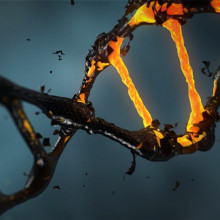
40:51 - Artificial DNA: What is XNA?
Artificial DNA: What is XNA?
with Vitor Pinero, UCL
Georgia Mills is exploring the weird world of xenobiology – aka strange biology. Making something that follows the general rules of life, but is so completely different from what exists in nature that it can’t integrate, a sort of biological firewall. Vitor Pinero is aiming to this by building a completely new type of DNA.
Vitor - All life on Earth has always depended on DNA and RNA which is very limiting. Our plan has always been to can we change that chemistry, can we create a genetic material that is not DNA, that is not RNA? And, of course, once you have established that can you then bring it into biology, so can you have an informational system outside biology, but that we have to engineer all the bridges?
Georgia - A new type of DNA - the building block of life itself. So how do you go about changing it?
Vitor - The big advance is really coming from the chemists because they are the creative ones. They can come up with how to modify the nucleo base, how to modify the sugar in DNA, or how to even modify the backbone - the phosphate in DNA.
Georgia - When I think of DNA I immediately picture the famous double helix. But each step on that twisted ladder is what’s known as the base and it’s made of three parts, a nucleotide, a sugar, and a phosphate.
Vitor - They have many ideas. Chemically is an interesting area to explore but if you want to go into biology that’s not enough. You need the next step so you need to make sure that that chemistry is not toxic. You need to make sure that that chemistry is not used naturally by the enzymes that would normally replicate DNA. And if those sort of initial statements are sound you can start now moving the biological system to a user. Any modification in any of the chemical parts of DNA, we give it a name of XNA, so Xenobiotic Nucleic Acid.
Georgia - I see. There are these three components of DNA. There’s the base, there’s a sugar, and there’s a phosphate; combined, that’s one building brick of DNA?
Vitor - Yes.
Georgia - And then what you’re doing is taking one of those components and putting in something else - a different kind of chemistry which does a similar job and then hoping that will work the same way as DNA but it’s not made of it?
Vitor - Yeah. Because even small changes in the chemistry result in molecules that don’t have this classic helical form that DNA has, it has a distorted version. Ultimately over the course of six years we’ve managed to show that for multiple of these XNAs you can have a polymerase, this is the enzyme that replicates the DNA, but working with XNAs, so they can synthesise an XNA. I think we now have demonstrated about ten of those. They can take the XNA and bring back that information to DNA, these are all outside the cell in a test tube. But, of course, having demonstrated that, now the next step is can we bring this a step closer to biology.
Georgia - And that would be going in the cell because one of the things DNA does is it is used to build the bits of cell and, eventually, all the way up into an organism. Could XNA be used to build new organisms?
Vitor - To some extent that’s the hope; that’s where one of the applications would emerge from XNA. But, of course, that itself is a big challenge to bring it into a cell because you have to solve how to deliver the chemical precursors into the cell. You have to make sure that the cell can’t use it and any enzyme you engineer can’t use the natural blocks.
Georgia - What are the possible uses of XNA?
Vitor - Some uses don’t need to go into biology, because from the moment you have a chemistry that is resistant to biology itself that opens up a series of applications. For instance, nucleic acids you can evolve them to become natural binders, so they become single molecules of nucleic acid, short, they can fold upon themselves, and almost work like an antibody, so they have a very tight specific binding to whatever you’ve engineered it to. However, they can be good diagnostics but they don’t usually make good therapeutics so you can’t use them like an antibody drug, primarily because biology has evolved to exclude biology. Our bodies are designed to destroy any DNA that’s outside the cell.
Georgia - So DNA doesn’t make a good drug delivery tool because the body will recognise it and destroy it. But XNA can slip past the defences taking the drug where it needs to go, a kind of pharmaceutical invisibility cloak…
Vitor - That’s in a test tube. If you want to bring XNA into biology you have different applications. You have, of course, the blue sky, the big question: can you make life with a different molecule?
Georgia - How far along is this? Is this something we’ll see in the next 10 years, 20 years, 100 years, what’s the timescale of when you think this might come off?
Vitor - With XNA, I think we’re probably looking the next decade to have a proof of principle, in a cell, an XNA is viable. But once that system is achieved, progress towards an organism would be very fast. In a way, we’re trying to emulate biology, it allows inventor, but once we can invent something then it’s easy to optimise.

47:10 - The risks of Xenobiology
The risks of Xenobiology
with Piers Millett, University of Oxford
How do we work out what the chances of something getting out actually are, and then, if it did, what the consequences would be? Would a breach be unnoticed and unremarkable, or wipe us all out. Georgia Mills spoke to Victor Delorenzo from the National Centre of Biotechnology, who spends his time thinking about these things.
Piers - Hi, I’m Piers Millett. I’m a Senior Research Fellow at The Future of Humanity Institute at the University of Oxford.
Georgia - Is the subject of xenobiology something considered there?
Piers - It certainly is. We look at a variety of different, very low probability, very high consequence types of risks. We have been doing some thinking on both the risks and the potential benefits of things like xenobiology where we have a set of science that is not necessarily easily based upon existing risk structures, with existing datasets on risks, where we need to figure out what some of those benefits are and what some of the risks are? Certainly on the risk side there are questions about what the potential is to accidentally or deliberately create something that could outcompete natural resources or, indeed, have some massive impact on the environment no matter how low probably that actually is?
Georgia - How do you go about discussing something that’s never happened and you don’t really know how it would happen and what are the odds, that kind of thing? How do you even start?
Piers - Some of the basis here is to build around the concept that there are probably some consequences that are so large that the likelihood of them happening almost becomes irrelevant. If we think about technologies that could actually impact human development over centuries or even over millenia in the future, the value of human life as we move forward has to be offset against the risk that we face now. So that something that could dramatically decrease the chance of civilisation reaching its full potential or, indeed, lead to the complete wiping out of humanity, so we never see all those future lives that we would have needs to be offset against more likely, but lower consequence risks that we have to deal with at the moment.
Georgia - How does xenobiology rank in the list of the top ten threats? Is it considered by your scale a bigger or smaller thing to consider?
Piers - It’s a very new field so it’s something that we’re looking at. Something that we’re thinking about and I don’t think it’s currently perhaps one of those tops risks. That really feeds nicely into the way that it may help to manage other risks that we’ve been thinking about. One element of xenobiology that’s discussed a lot is whether it could be used for some sort of biocontainment strategy that would provide us with safer ways to explore the use of other advanced biotechnologies and, therefore, whether it would be a positive tool as we move forward and try and reaCH those sorts of futures that we’re talking about.
Much of the focus is on dealing with risks and avoiding the very worst outcomes to the future of humanity. That necessitates both trying to avoid certain futures and trying to create more positive futures. In reality, we spend a lot of time thinking about how we move the needle on those very very very low probability, but very very high consequence risk just a little bit because it turns out when you’re talking about the entire future of humanity, anything you can do to reduce the risk a tiny bit can have a massive impact when you look over the future.
Georgia - Xenobiology, I guess, is a funny one because there are these risks involved. But, at the same time, it could massively reduce the impacts of something we think is very likely to happen like climate change or something like that, so it’s sort of in this strange place. You say “reducing the risk,” how would you do that for something like xenobiology?
Piers - It’s remarkably important the ability and the willingness of the community, a scientific technical community to engage in the broader discussions about how their work fits into a societal context? I think one of the nice things about the meeting that we’ve been here at today, the willingness of the xenobiology community to consider the broader implications of their work rather than just the highly technical nature. I think that’s not an interaction we see in many areas of science and one that would really benefit from being replicated and thoroughly embraced more broadly I think as we try and figure out how science fits into society over the coming decades and years to come.
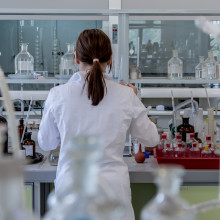
Is Xenobiology a good idea?
with Victor Delorenzo, Madrid's National Centre of Biotechnology
All risks considered, is xenobiology a good idea? According to Victor Delorenzo from the National Centre of Biotechnology in Madrid, the biggest risk is to not do anything at all! As Georgia Mills found out...
Victor - I think that we’re facing a number of major environmental global problems and there is a hope that, perhaps, synthetic biology and these heavily engineered organisms can help to tackle these problems. I argue that we should not be distracted on analysing or predicting actual risks, or entering into governance before having data simply because we do not have enough time to be distracted with these aspects and the priority, in my opinion, is to see whether we can really produce agents that can help us to solve the problems.
Georgia - Should we gather as much data as possible first, then access the risk later? But what makes Victor so confident we shouldn’t worry about something escaping?
Victor - You cannot say it will not happen 100% security, safety or predictability. But, what we can say is that after nearly 40 years of many laboratories working on genetic engineering, there’s not one single case reported in the literature in which release, either accidental or deliberate, of these types of recombinant organisms have created any detectable problem. That doesn’t mean of course, it may not happen in the future but, for the time being, I would be on the safe side and advocate that we should not be over concerned because the data so far is very ambiguous and gives us reasons to be optimistic.
Georgia - What about intentional harm like bioterrorism?
Victor - If you want to be a bioterrorist, you have plenty of natural microbes, and natural pathogens that are far worse in the imagination of any available synthetic biology can entertain. That’s one thing, and the other thing is that we still don’t know enough how pathogenesis works and it will be very difficult and very intricate thinking of improving the natural mechanisms of bitterness that are out there. Finally, I think that the only laboratories that could do something connected to that are in super super advanced countries and I don’t think that they are not in the position to develop these types of approaches.
Georgia - While contamination is a risk, Victor thinks this has actually happened a few times before and, in general, the natural world hasn’t blinked an eye. In terms of bioterrorism we’re not close to being able to engineer something that could be this affective and the natural world has currently come up with a lot of deadly options already. Whether this has you convinced or not, these kinds of questions of risk and responsibility aren’t unique to xenobiology...
Victor - Every time there is a really disruptive technology you have a list of questions that historically have been raised when they have been exposed to the wider public. So is this technology safe? Also there’s the question of who owns the intellectual property and it’s interesting because in the time of the invention of anaesthetics there were some discussions between French groups and American groups of who should really hold the patent of these anesthetics. But also there are these moral aspects: are we doing something wrong, are we doing something against nature, are we playing God, that sort of thing? These discussion were very intense in the 19th century but now everyone considers that anaesthetics is fantastic and it is, in fact, one of the biggest advances in medicine.
My hope and my expectation is that these discussions we have today will develop into a general acceptance that xenobiology is great and is a brand new technology that will allow us to solve problems that we could not solve before.
Georgia - It’s still early days in the field yet and it remains to be seen how people will respond to the technology, and even if will be able to delivery on its promises? Will it be another anesthetic greeted first with suspicion but then with acceptance, even dependence? Will it be seen as a way to save the planet from catastrophe, or will it be seen as a dangerous experiment which could do more harm than good? Well, I’ll give Victor the last word…
Victor - The world is divided between pessimists and optimists, and I belong to the optimist community. I believe that science and technology and, in particular, synthetic biology and all these new approaches to biological assistance will be our best allies to make sure that we hand over our planet to the next generations in good shape.










Comments
Add a comment